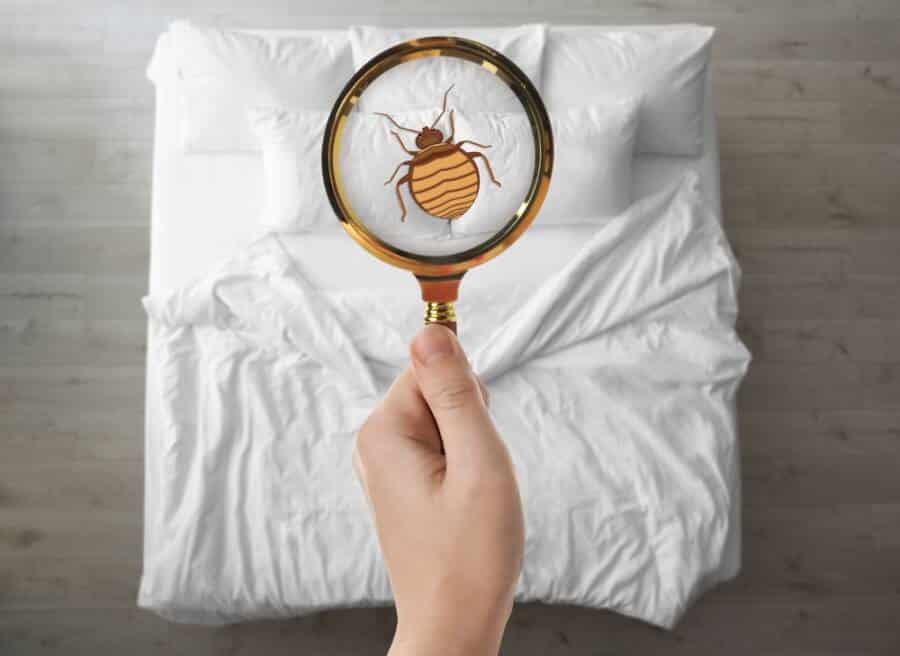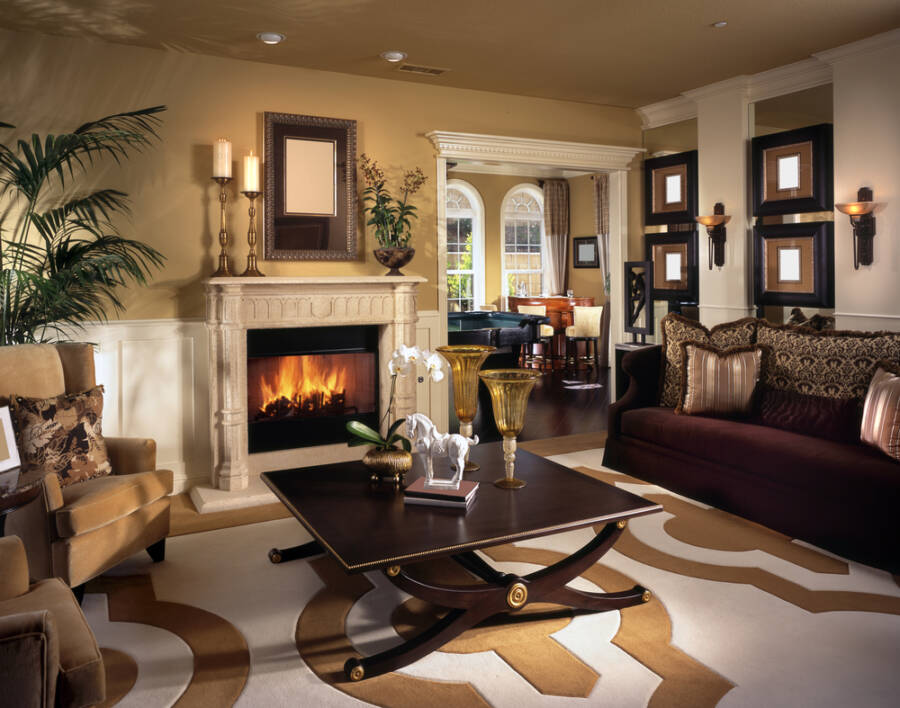Do you agree with these tiny house perks?
As housing costs continue to skyrocket, the tiny house movement has accumulated popularity by suggesting a lifestyle free of the clutter and financial burdens commonly associated with traditional homes.
Ranging from approximately 300 to 500 square feet, these homes tend to attract travel enthusiasts and minimalists who appreciate the benefits of a simpler lifestyle and compact living.
But, despite the romanticization of this kind of living and the tiny house perks, there are also a few obstacles and potential resale issues to consider.
So, to simplify things, The Home Team has created a guide to walk you through the most essential factors when evaluating the pros and cons of the tiny house lifestyle.

Tiny house perk: financial freedom and less debt
Tiny homes offer a considerable debt reduction, and you’ll end up with more financial freedom. The average cost of a traditional house in the US is roughly $280,000, while a tiny home ranges between $23,000 and $70,000.
These lower prices allow many tiny homeowners to avoid enormous mortgages, achieving homeownership without going into any significant debt.
And the good news is that with the minimal or no mortgage payments comes the added bonus of more funds available for hobbies, travel, and retirement savings. This financial flexibility helps you live within your means and you can achieve long-term economic stability.
Tiny house perk: Eco-friendly living
Living in a tiny house encourages a smaller carbon footprint. These types of homes consume fewer resources, both in daily living and construction. Your energy needs will be lower, resulting in smaller utility bills and reduced environmental impact.
Also, many tiny homes include sustainable materials and energy-efficient systems like solar panels. By choosing a tiny house, we can contribute to ecological preservation, further assisting in decreasing overall carbon emissions.
Tiny house perk: Lower utility and maintenance costs
Living in a tiny home will get you lower utility and maintenance costs. Traditional homes often demand about $1,000 a month in mortgage payments alone.
In contrast, the total cost of owning and living in a tiny house can be as low as $500 monthly, including maintenance and utilities. Smaller spaces result in decreased utility consumption, leading to lower bills.
And lower cooling, heating, and overall upkeep costs translate to significant monthly savings. Over time, these savings add up, easing any financial burdens and contributing to your financial objectives.
Tiny house perk: Minimalism and simplified living
Living in a tiny house enables us to adopt a minimalist lifestyle by focusing on what actually matters in life. We can eliminate excess and prioritize essential items.
This will ultimately lead to less clutter and a more organized, cleaner living space. Simplified living can also lower stress levels and enhance our overall well-being, creating a more fulfilling and intentional lifestyle.
Tiny house perk: Reduced carbon footprint
As you can already guess, tiny homes yield a smaller carbon footprint than traditional homes. They produce less waste, use fewer resources, and consume less energy.
For instance, downsizing from a 2,500-square-foot home to a 400-square-foot tiny house can cut down your energy usage by a whopping 45%.
This drop directly translates to less greenhouse gas emissions, which will contribute in a positive way to the environment. So, by living in a tiny home, you’ll actively reduce your environmental impact.

Tiny house perk: Affordability and cost-effectiveness
Tiny houses typically cost a mere fraction of traditional homes. Construction permits can range anywhere from $500 to $3,000, foundations between $5,000 and $8,000, and home systems like plumbing and electrical cost anywhere from $3,800 to $9,500.
The total cost of a tiny house can range from approximately $30,000 to $75,000, making it an affordable option for many individuals. This lower financial burden will allow you to save more, invest in other areas of your life, or even set some more money aside for your retirement.
Tiny house perk: Sustainable building methods
Many tiny homes integrate sustainable building techniques. These homes often use eco-friendly materials like bamboo flooring, recycled wood, and paints that are non-toxic. Builders can also incorporate renewable energy systems like wind turbines and solar panels.
Water-saving features, such as composting toilets and rainwater harvesting systems, will enhance sustainability even further. By embracing these traditions, living in a tiny home will minimize resource consumption and promote a greener lifestyle.
Tiny house perk: Lower living expenses
Living in a tiny house will ultimately translate to significantly lower monthly expenses. The combined cost of utilities, which include water, electricity, and heating, can average to roughly $50 per month.
Furthermore, tiny houses usually have fewer maintenance requirements, reducing ongoing repair costs. Home insurance averages between $600 and $1,000 yearly, differing vastly from the average cost of homeowners insurance for traditional homes.
These decreased expenses will obviously provide you with more financial breathing room.
Tiny house perk: Mobility and flexibility
One of the most remarkable benefits of tiny houses is their flexibility. Many tiny homes are made on trailer hitches, which allow you to move quickly from one area to another. This migrating lifestyle is ideal for those who require relocation due to work or enjoy travel.
The smaller footprint also means a more straightforward adaptation to different living conditions without the limitations of traditional zoning laws. This flexibility can lead to diversified living experiences and improved life satisfaction.

The bottom line
The decreased living space in a tiny house encourages a clutter-free lifestyle and overall minimalism. Owning fewer things can even reduce stress and enhance our mental health.
Small spaces make cleaning and maintaining more manageable and quicker, freeing up time for other activities. They also offer greater mobility and flexibility. Many tiny houses have a built-in trailer hitch, allowing us to move them whenever we want.
This type of wandering lifestyle can provide amazing experiences and opportunities to explore different places without the hassle of traditional moving. But the best part is that there are lower costs associated with tiny homes beyond just the purchase price.
Insurance for them is generally higher because of their higher risk since they’re often built on trailers, making them more sensitive to damage during travel. Nevertheless, overall expenses, including maintenance and utilities, are significantly lower.
And another bonus is that they contribute to a more sustainable way of living. With energy-efficient designs and eco-friendly materials, these homes lower resource demand.
Composting toilets, solar panels, and having rainwater collection systems are pretty standard features that make tiny living very environmentally friendly. Yet the biggest thing we should probably consider is that tiny homes help fight the housing crisis.
They provide an affordable option for housing, which is particularly important in places with high living costs. Smaller footprints can place tiny homes in underutilized spaces, providing housing solutions in densely populated areas and maximizing land use efficiency.
If you’re considering the tiny house lifestyle, it’s important first to understand the logistical and financial factors, including the potential need for mobile or manufactured home insurance.
Speaking to a licensed insurance agent can be a big help in choosing the best coverage options. Furthermore, be aware of the permits, parking, and taxes because they vary by zone and contribute to the overall cost.
And remember: Purchasing some Smart Light Bulbs to go with your tiny house can further save you more money down the line!
We hope you found this article on tiny house perks helpful. But The Home Team has many more fantastic reads we think you’ll love. For instance, check out: 14 Home Maintenance Mistakes That Are Damaging Your Home









